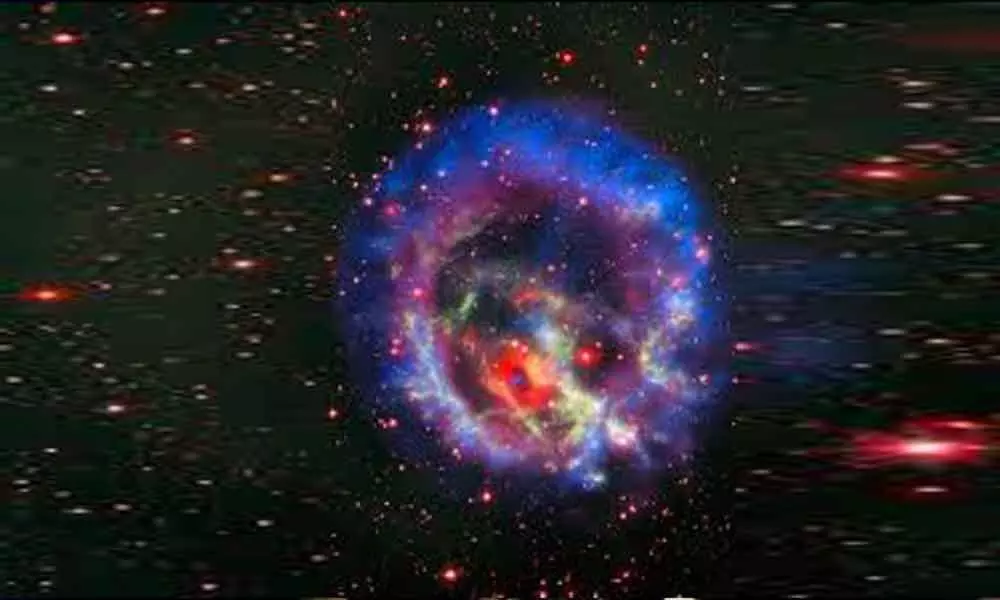Live
- Traffic restrictions on heavy vehicles in Rachakonda
- BoB signs MoU with Singareni
- Phone-tapping case: HC extends protection to Harish from arrest until Jan 28
- Global uncertainty hits mkt sentiment
- SCB inaugurates test tax assessment module
- 300 jobs created with ARIQT innovation hub: Sridhar Babu
- CCMB show wows wannabe scientists
- Transport dept slaps 150 cases on pvt bus operators in State
- Cuffs on 23 for cyber frauds across country
- Visakhapatnam-Sec’bad Vande Bharat to operate with 20 coaches from today
Just In

Astronomers have found a massive galaxy, dating from the early universe, lurking in cosmic dust clouds -- an advance that may open the doors for discovering a new galaxy population type.
Boston (PTI): Astronomers have found a massive galaxy, dating from the early universe, lurking in cosmic dust clouds -- an advance that may open the doors for discovering a new galaxy population type.
The researchers, including those from the University of Massachusetts in the US, said that the discovery provides new insights into the first growing steps of some of the biggest galaxies in the universe. "We figured out that the galaxy is actually a massive monster galaxy with as many stars as our Milky Way but brimming with activity, forming new stars at 100 times the rate of our own galaxy," said study co-author Ivo Labbé from the Swinburne University of Technology in Australia.
As part of the study, published in the Astrophysical Journal, the researchers used the Atacama Large Millimeter Array, or ALMA -- a collection of 66 radio telescopes located in the high mountains of Chile. The lead author of the study, Christina Williams, said that she noted a faint blob of light initially. "It was very mysterious but the light seemed not to be linked to any known galaxy at all. When I saw this galaxy was invisible at any other wavelength, I got really excited, because it meant that it was probably really far away and hidden by clouds of dust," she said.
According to the researchers, the signal came from so far away that it took nearly 12.5 billion years to reach the Earth, when the universe was still in its infancy. The astronomers believe that the discovery may solve a long-standing puzzle in astronomy about how some of the biggest galaxies in the early universe appear to have grown up and matured very quickly against theoretical predictions.
Additionally, smaller galaxies seen in the early universe with the Hubble space telescope are not growing fast enough, the researchers said. "Our hidden monster galaxy has precisely the right ingredients to be that missing link, because they are probably a lot more common," said Williams. The study was carried out in only a tiny part of the sky, less than 1/100th the size of the Moon, the researchers said.
Finding traces of the 'monster' galaxy in a tiny strip of the cosmos, means either that this was a lucky find, or that such galaxies are cloaked and lurking everywhere. Williams said that she is eager for the James Webb Space Telescope (JWST) to take a look at these cosmic entities once the revolutionary telescope is launched in 2021. "JWST will be able to look through the dust veil so we can learn how big these galaxies really are and how fast they are growing, to better understand why models fail in explaining them," she said.

© 2025 Hyderabad Media House Limited/The Hans India. All rights reserved. Powered by hocalwire.com







